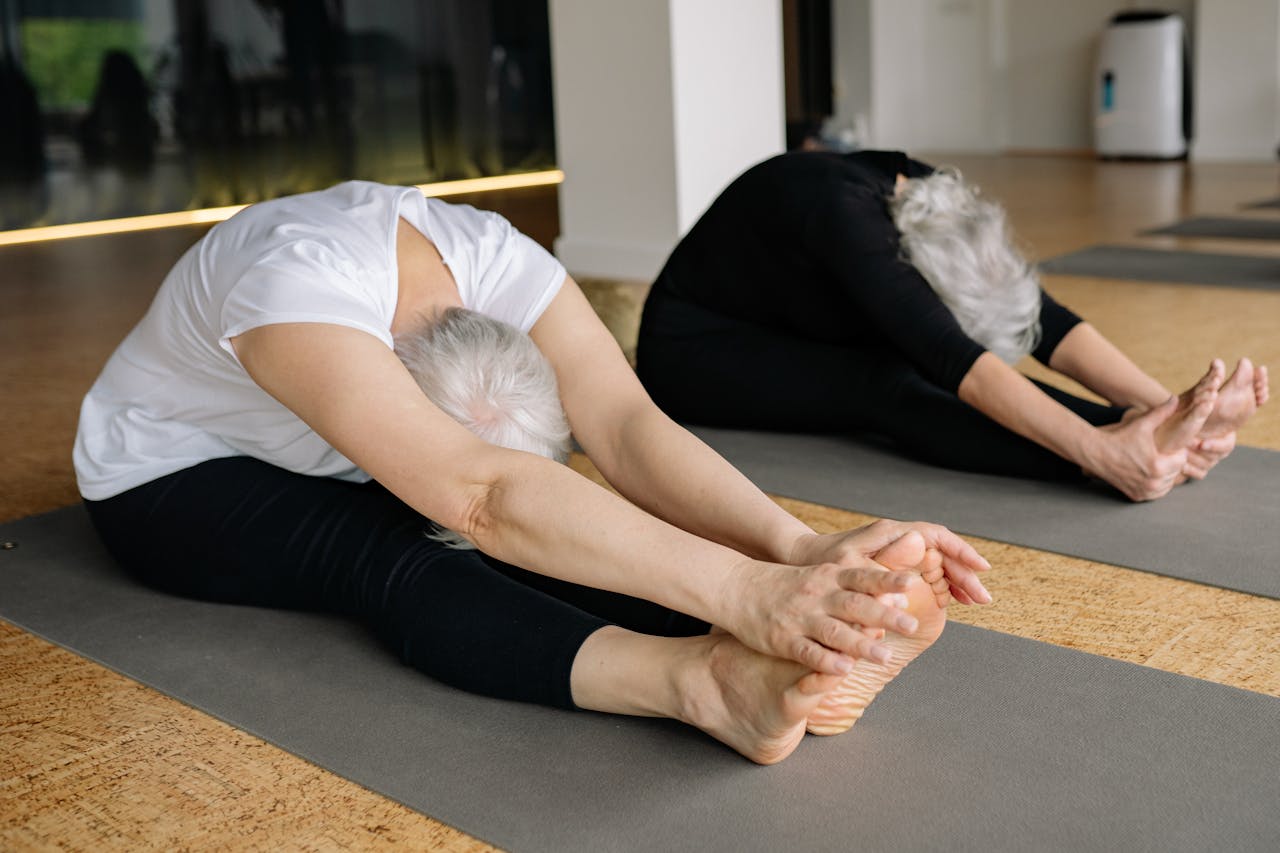Write Us: hello@ali5.org
Stretching 101: When to Do It, How to Do It, and Why It Matters
Stretching 101: Discover when and how to stretch for maximum benefit. Learn proper techniques, timing, and the key reasons stretching matters for flexibility and injury prevention.

Spreading out. It’s something that everyone knows they should do, but not many people make time for. Lots of things come up, like work, workouts, chores, and scrolling through your phone, so you forget to do it. But here’s the thing: stretching isn’t just a warm-up or something you do afterward; it’s an important habit that keeps your body flexible, lowers your risk of injury, and even makes you feel better mentally.
It’s one of the best things you can do for your body to make stretching a habit. Here’s when to do it, how to do it right, and why.
Why It’s Important to Stretch
Let’s talk about why stretching is important before we talk about when and how. When you stretch, you shouldn’t just touch your toes or show off how flexible you are. It’s better than that in many ways:
1. Makes you more flexible
Muscles that are flexible move more easily, which increases your range of motion and makes daily tasks easier.
2. Lowers the risk of harm
Pulls or strains can happen when muscles are too tight. They are less likely to get hurt during workouts or daily tasks when you stretch them.
3. Helps with stance
Your balance can be off when you sit or slouch. Widen your chest, shoulder, and hip muscles, as well as any others that feel tight.
4. Takes away stress and tightness
Stretching helps muscles get rid of stress. It also makes the blood move faster, which makes the body and mind feel calm.
5. Helps with healing and circulation
Stretching after working out can help your muscles heal faster by increasing blood flow to them. This helps bring nutrients to them and get rid of waste. To put it simply, you have to stretch. It helps your body stay handy, flexible, and at ease as you go about your daily life.
When to Stretch
It’s important to know when to stretch. When you stretch changes what kind of stretching you do.
1. Dynamic stretching before working out
Active stretches that slowly move your muscles through a range of motion are called dynamic stretches. This kind of stretching gets your muscles ready for exercise, warms up your body, and improves blood flow.
Some examples of moving stretches are:
- Do arm loops
- Swing your legs.
- Do walking lunges.
- The torso turns
Before working out, it’s best to do dynamic stretching instead of static stretching, which means keeping a stretch for a long time. Static stretching can temporarily weaken muscles before exercise.
2. Static stretching after working out
You hold a stretch for 15 to 60 seconds. This is called static stretching. Before bed, when your muscles are still warm, is the best time to do it. Static stretches help your muscles rest, become more flexible, and heal faster.
Some examples of static stretches are:
- Hold your breath and reach for your toes as you sit down.
- To stretch your quads, bring your heel up toward your hips.
- To stretch your shoulders, cross one arm over your chest and hold it there.
- To stretch your chest, put your hands behind your back and lift them slowly.
Stretching after a workout is another great way to calm down and get out of the high-energy state you were in during the workout.
3. Whenever you feel stiff
You don’t need to wait to work out. It can be very helpful to stretch during the day, especially if you sit for a long time. Taking short breaks to stretch can:
- Lessen stress in your neck and back
- Improve blood flow
- Boost your attention and energy
Standing forward bends, shoulder rolls, or sitting spinal twists can help, even if you only do them for two to three minutes every hour.
How to Stretch Right
Even though stretching seems easy, if you do it wrong, it might not work or even hurt you. How to do it right:
1. Start by warming up.
The warmer your muscles are, the better they can stretch. Do some light exercise, like walking or running in place, before you do static stretching.
2. Do not bounce.
When you do stretches, don’t do “ballistic” ones where you jump in and out of positions. Small tears in muscles can happen when you bounce, which can hurt you. Hold stretches should be done slowly and gently instead.
3. Take deep breaths.
A lot of people hold their breath when they stretch, which makes them tense. Letting your muscles rest and getting more out of the stretch can be helped by taking slow, deep breaths.
4. Pay attention to your body.
It shouldn’t hurt to stretch; it should feel like gentle strain. It can backfire to push too hard. Mild pain is fine, but sharp or severe pain means you should back off.
5. Hold on long enough
Aim for 15 to 60 seconds of motionless stretches. If you can, do it twice or three times. This gives your muscles time to get stronger and longer.
6. Pay attention to big muscle groups
Don’t just stretch the parts that feel tight. Pay attention to your legs, quads, hips, chest, shoulders, back, and calves. Stretching in a balanced way keeps your body flexible and evens out its shape.
Different Ways to Stretch
Knowing the different kinds of stretches will help you do them right:
1. Stretching for no reason
What it is: Staying in one place without moving
Best for: After working out or to make you more flexible
Stretching your hamstrings while sitting
2. Stretching that moves
What it is: Moving in a controlled way
Best for: Warming up before or during exercise
Leg lifts or walking lunges are two examples.
3. PNF stands for “Proprioceptive Neuromuscular Facilitation.”
What it is: a way to work out muscles by tightening them and then stretching them out even more
Best for: getting more flexible more quickly (runners often use this method).
Hamstring PNF stretch while lying down with a strap
4. Stretching while moving
It’s the act of stretching one muscle by using the other muscle.
Best for: Making control and movement stronger
Raising your leg and keeping it up without any help
What Not to Do: Common Mistakes
Even small mistakes can make stretching less useful:
- Skipping the warm-up: Stretching cold muscles makes them more likely to get hurt.
- When you hold your breath, your muscles don’t rest, and tension builds.
- Ignoring pain: It should never hurt to stretch. A sign is sharp pain.
- Not being consistent: Stretching every once in a while won’t change anything. Daily exercise is important.
- Only paying attention to trouble areas: Your shoulders might be tight because your hips or chest are tight.
Making it a habit to stretch
Consistency is the key to getting the rewards. Here are some ways to make stretching a daily habit:
- To wake up your body, stretch first thing in the morning.
- Put in a 5- to 10-minute exercise after your workouts.
- If you work at a desk all day, stretch during breaks.
- Set your phone to remind you to take short breaks to stretch.
- Do something else while you stretch, like watching TV or listening to a podcast.
- It only takes 10 minutes a day to make a big difference in your flexibility, balance, and comfort.
Why stretching is good for your mind
Stretching isn’t just good for your body. It’s also good for your mind:
- Lessens stress: Tense muscles can make you feel more stressed. When you stretch, it falls off.
- Short stops to stretch get your blood moving and wake you up, which helps you focus.
- You become more aware of your body when you stretch, and you can see problems with your balance or standing before they get worse.
You could think of it as a short break for your body and mind.
In the end
Stretching is an easy way to stay mobile, ease pain, and improve your health in general, but many people forget to do it. You don’t need fancy tools or classes that cost a lot of money. All you need is a few minutes a day, the right method, and consistency.
Here’s an easy thing to remember:
- Do active stretches before you work out.
- Do passive stretches after working out.
- Every time you feel stressed, get more blood moving, and improve your balance by stretching.
It’s not fun to stretch, and it might feel slow at first. But it changes how your body moves, feels, and works over time. Make it a daily habit, and your body will thank you by making you less tense, more flexible, and stronger.







